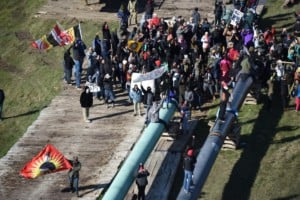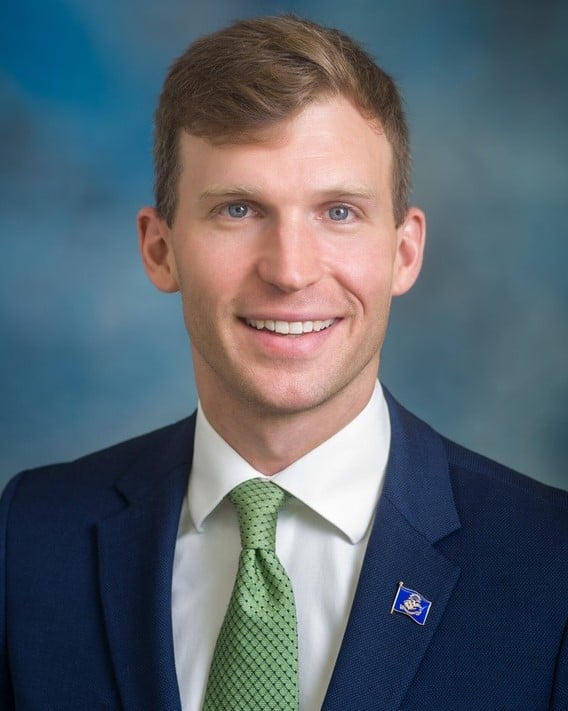Burgum didn’t want DAPL to escalate into a standoff

BISMARCK, N.D. (North Dakota Monitor) – Gov. Doug Burgum opposed removing Dakota Access Pipeline protesters by force, he testified Monday.
An email shown in a federal court trial indicated Burgum favored using humanitarian outreach to the camps as a means to end the protests that drew thousands of people from across the country.
“He doesn’t want a clearing out of the camps, doesn’t like the optics,” Col. John Henderson of the Army Corps of Engineers wrote in the email, which recounted a meeting with Burgum that took place in January 2017.
According to the email, Burgum told Henderson he didn’t want the protests to end up like Wounded Knee — referring to the 1890 massacre of an estimated 150 to 300 Lakota people by American soldiers, as well as the 1973 demonstrations on the South Dakota site of the massacre. Those demonstrations resulted in an armed standoff and the killing of two Native Americans by federal law enforcement.
During his testimony, Burgum clarified that he meant he didn’t want the response from law enforcement to be heavy-handed for fear it could cause clashes between protesters and police.
“We didn’t want this to inflate into a conflict,” he said.
In previous testimony, witnesses for the state have criticized federal officials over similar concerns, arguing that they were too tolerant of the demonstrations. Burgum said Monday that the protests were prolonged and exacerbated due to “a lack of action by the federal government.”
North Dakota is suing the United States for $38 million in an attempt to recover money it says it spent policing protesters opposing construction of the project, often referred to as DAPL. The Standing Rock Sioux Tribe opposes the pipeline and the water crossing under the Missouri River because of concerns for the tribe’s water supply.
The state claims the federal government is at fault for not offering more assistance to North Dakota and working to end the demonstrations sooner, especially given that the largest protest camp was located on land managed by the Army Corps of Engineers.
Attorneys for the United States argue North Dakota is overstating both the cost of the protests and the federal government’s influence on demonstrators.
A bench trial overseen by U.S. District Court Judge Daniel Traynor began Feb. 15. Testimony is expected to continue through the first two weeks of March.
The governor helped bring an end to the demonstrations by issuing an evacuation order on Feb. 15, 2017. The Army Corps of Engineers sent out a similar notice to protesters nearly two weeks prior on Feb. 3, though Burgum didn’t recall the Corps taking that step while on the witness stand Monday.
Both orders gave protesters until Feb. 22 to leave Corps land.
Demonstrators were offered free bus rides to Bismarck, medical care, food and hotel rooms, among other accommodations, Burgum said. Those who refused to get on the buses or leave the camps by other means were arrested.
The evacuation followed an unsuccessful attempt by Burgum’s predecessor, former Gov. Jack Dalrymple, to remove protesters from Corps property in November 2016.
Burgum said the impending threat of snowmelt flooding the camps may have given the February order a sense of urgency that Dalrymple’s did not.
Burgum also speculated that the transition from President Barack Obama to President Donald Trump in 2017 may have resulted in a White House more receptive to North Dakota’s point of view.






